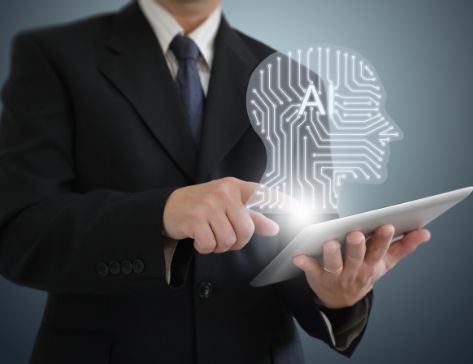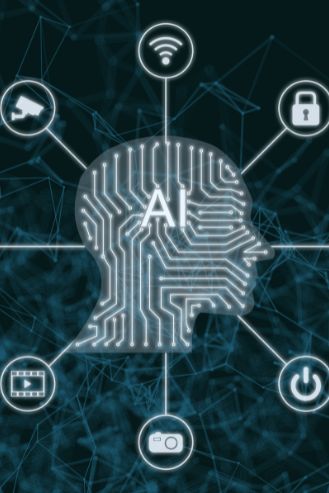
The Future of AI-Powered Marketing Automation: Transforming Business in 2025
AI-powered marketing automation is revolutionizing how businesses connect with customers, streamline operations, and drive growth in today’s digital landscape. As we navigate through 2025, the evolution of marketing automation technologies continues to accelerate, offering unprecedented opportunities for businesses of all sizes. This comprehensive guide explores the cutting-edge developments, practical applications, and strategic considerations that will shape the future of marketing automation.

The Current State of Marketing Automation in 2025
Marketing automation has evolved from simple email scheduling tools to sophisticated platforms that orchestrate multi-channel customer journeys. Today’s marketing automation trends show that 76% of companies are using automation in some capacity, with adoption rates growing by approximately 15% annually. The global marketing automation market is projected to reach $14.5 billion by 2027, reflecting the technology’s increasing importance in modern marketing strategies.
The most significant shift in recent years has been the deep integration of artificial intelligence and machine learning capabilities. These technologies have transformed marketing automation from rule-based systems to intelligent platforms capable of predictive analysis, personalization at scale, and autonomous decision-making. This evolution has dramatically increased the ROI of marketing automation investments while reducing the manual workload for marketing teams.
Key Innovations Driving Marketing Automation Forward
1. Hyper-Personalization Through AI
AI-powered marketing automation now enables personalization far beyond simple name insertion or basic segmentation. Modern systems analyze thousands of data points to create truly individualized experiences:
- Behavioral Analysis: Systems track and interpret complex user behaviors across multiple touchpoints
- Predictive Content Selection: AI algorithms determine optimal content for each user based on past interactions
- Dynamic Timing: Messages are delivered when individual users are most likely to engage
- Personalized Journey Mapping: Customer journeys adapt in real-time based on ongoing interactions
2. Conversational AI and Advanced Chatbots
The latest generation of AI-powered chatbots and virtual assistants has transformed automated customer interactions. These systems now:
- Understand natural language with near-human comprehension
- Maintain context throughout complex, multi-turn conversations
- Seamlessly integrate with marketing automation workflows
- Provide personalized recommendations based on conversation history
- Handle complex transactions without human intervention
3. Predictive Analytics and Anticipatory Marketing
Modern marketing automation platforms leverage predictive analytics to anticipate customer needs and behaviors. This capability enables:
- Churn prediction and proactive retention campaigns
- Identification of high-value prospects before they self-identify
- Product recommendations based on predicted future needs
- Optimal timing for upsell and cross-sell opportunities
Practical Implementation Strategies for 2025 and Beyond
Successfully implementing advanced marketing automation requires a strategic approach. Here are key steps for organizations looking to leverage these technologies effectively:
1. Audit Your Data Infrastructure
Before implementing advanced automation, ensure your data foundation is solid:
- Consolidate customer data from disparate sources into a unified customer data platform (CDP)
- Implement robust data governance policies to ensure quality and compliance
- Develop clear data taxonomies and standardization protocols
- Establish real-time data processing capabilities to enable immediate action
2. Adopt an Incremental Implementation Approach
Rather than attempting a complete overhaul, consider these steps:
- Start with a specific, high-impact use case (e.g., abandoned cart recovery)
- Measure results and refine your approach based on actual performance
- Gradually expand to additional channels and customer segments
- Continuously evaluate marketing performance metrics to guide expansion
3. Develop Cross-Functional Expertise
Modern marketing automation sits at the intersection of multiple disciplines:
- Train marketing teams on data analysis and basic AI concepts
- Involve IT in marketing technology decisions from the beginning
- Create collaborative workflows between marketing, sales, and customer service
- Consider hiring specialists with both marketing and technical expertise
Emerging Trends Shaping the Future Landscape
Looking beyond 2025, several emerging trends will likely define the next generation of marketing automation:
1. Ambient Computing and IoT Integration
As smart devices proliferate, marketing automation will extend beyond traditional digital channels:
- Smart home devices will become new touchpoints for brand interactions
- IoT sensors will provide real-time context for personalized marketing
- Voice interfaces will become primary interaction channels for many consumers
- Automation systems will orchestrate experiences across physical and digital environments
2. Augmented and Virtual Reality Marketing
As AR and VR technologies mature, they will be integrated into automated marketing workflows:
- Virtual product demonstrations triggered by customer behaviors
- Augmented reality shopping experiences personalized to individual preferences
- Immersive brand storytelling adapted to customer interests
- Virtual events and experiences that adapt based on participant engagement
3. Ethical AI and Privacy-First Automation
As regulations tighten and consumer awareness grows, successful automation will prioritize:
- Transparent data usage policies and clear opt-in mechanisms
- Explainable AI that can justify marketing decisions
- Privacy-preserving personalization techniques
- Ethical frameworks for automated decision-making
Overcoming Implementation Challenges
Despite its potential, advanced marketing automation faces several implementation challenges:
1. Integration Complexity
Modern marketing stacks often include dozens of tools that must work together seamlessly:
- Prioritize platforms with robust API capabilities and pre-built integrations
- Consider middleware solutions to connect disparate systems
- Develop clear integration roadmaps before implementation begins
- Allocate sufficient technical resources for integration maintenance
2. Skill Gaps and Organizational Readiness
Many organizations lack the specialized skills needed for advanced automation:
- Invest in comprehensive training programs for existing staff
- Partner with specialized agencies for knowledge transfer
- Consider managed services for complex implementation phases
- Develop clear career paths for marketing technology specialists
3. Balancing Automation and Human Touch
Effective marketing still requires human creativity and emotional intelligence:
- Identify touchpoints where human interaction adds significant value
- Use automation to augment rather than replace human marketers
- Implement regular reviews of automated content and decisions
- Create escalation paths from automated systems to human teams
Preparing for the Automated Future
The future of marketing automation is not just about technology—it’s about fundamentally reimagining how businesses connect with customers. Organizations that successfully implement these advanced capabilities will gain significant competitive advantages in efficiency, personalization, and customer satisfaction. However, success requires more than just purchasing the latest tools; it demands strategic vision, organizational adaptation, and a commitment to native advertising and content strategies that complement automation capabilities.
As we move forward, the most successful organizations will be those that view marketing automation not as a set of tactics but as a transformative strategic capability. By combining cutting-edge technology with human creativity and ethical considerations, businesses can create automated marketing ecosystems that deliver exceptional customer experiences while driving sustainable growth.


